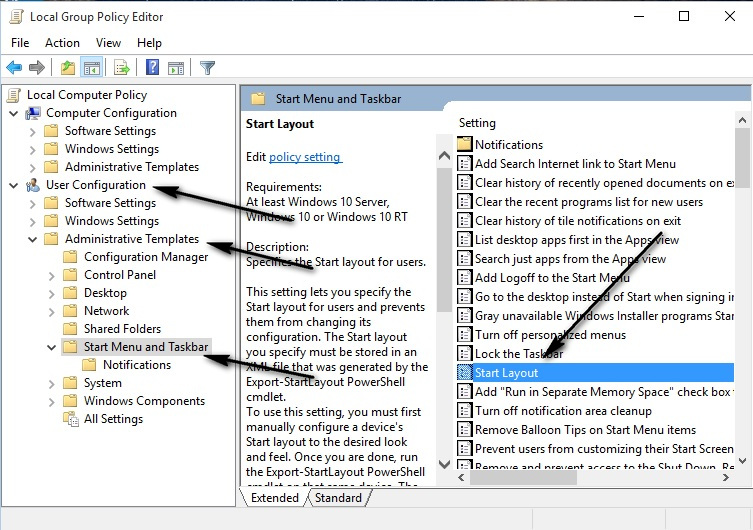‘Customize Windows 10 Start Menu via Group Policy (Domain)’
Windows 10 brings with it a ton of cool features that are specifically designed for the comfort and ease of domain administrators all over the world. With Windows 10, domain administrators can make a wide variety of changes to every single one of the computers on their domain by simply making the changes they want to their own computer. One of the aspects that domain administrators can control for their entire network is the Start Menu of every single computer connected to the network.
Using Group Policy, domain administrators can create a unique Start Menu layout for all users within a domain. This layout, which can be applied to user computers, allows the administrator to control which applications are pinned to the Start Menu, as well as the arrangement and size of the menu tiles. This feature is available exclusively in the Education and Enterprise versions of Windows 10. When enabled, it restricts other users within the domain from making changes to the Start Menu, including altering the apps and tiles.
The following is everything you need to do to create a customized Start Menu layout for your entire domain using Group Policy:
Customize the Start Menu on your computer and give it the layout that you want applied to all of the computers on your network. This includes pinning and unpinning applications from the Start Menu, rearranging tiles, resizing tiles and creating app groups.
Next, export the Start Menu layout you have created to an .xml file so you can move it to a storage space shared by all the computers on your network. To do this, first open the Start Menu, type ‘powershell’, and open the program named ‘Windows PowerShell’.

In the Command Prompt, type in the command export-startlayout –path <path><file name>.xml, replacing <path> with the path where you want the file to be saved, and <file name> with the name you want for the .xml file. The final command might look something like: export-startlayout –path \\FileServer\StartMenuLayouts\Layout1.xml. Make sure to choose a path for the file that can be accessed by all computers on the network.
Once you have exported the layout to an .xml file, you can move onto actually applying it to all of the computers on the network using Group Policy. To do so, first open the Start Menu, type ‘edit group policy’ into the Search box, and click on the program named ‘edit group policy.’
In the left pane, expand User Configuration or Computer Configuration.
Expand Administrative Templates and then click on Start Menu and Taskbar.
In the right pane under Settings, right click on Start Layout and click on Edit.

When the Start Layout policy settings appear, click on ‘Enabled’ to apply the Start Menu layout through Group Policy. Then, paste the path—accessible to all network users—where the .xml file for your Start Menu layout is stored, under ‘Start Layout File’.

Click on Apply and then click on OK, and the Start Menu layout you have created will be applied to all users on the network.

If you wish to update the Start Menu layout you have created at any time, simply create a new layout and replace the old .xml file with a newer, updated .xml file using the export-startlayout command in Windows PowerShell. Once you do so, Group Policy will import and apply the updated Start Menu layout the next time any of the users of the domain log on.